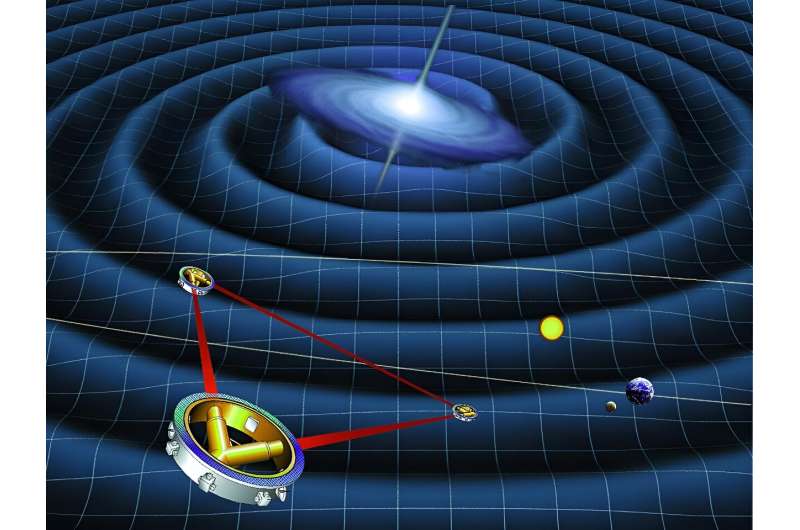This article has been reviewed according to Science X's editorial process and policies. Editors have highlighted the following attributes while ensuring the content's credibility:
fact-checked
peer-reviewed publication
trusted source
proofread
Paper explores ideal orbits for space-based interferometers

Ever since the telescope was invented in 1608, astronomers have striven for bigger and better telescopes. When it comes to instruments to observe the sky, bigger really is better whether you are observing faint galaxies or planets a larger collector gives higher resolution and brighter images. A paper by Takahiro Ito from the Institute of Space and Astronautical Science in Japan recently posted to the arXiv preprint server looks into different kinds of orbits around Earth which support multiple telescope systems known as interferometers at different orbits.
There is a limit to the size of telescopes based on Earth, they can become so large that they warp under their own weight so it is a constant battle to keep images sharp. An alternative solution is to hook up multiple telescopes so they work together. These interferometers work well on Earth but space-based instruments offer further challenges. In Ito's study, which looks into different types of orbits, it seems there is one orbit in particular that favor the space-based interferometer.
The concept of interferometry makes use of the wave property of light. The signal from independent receivers (be they optical or other wavelengths) are combined and superimposed and from this, synthetically represent the resolution of a telescope equivalent to the distance between the two receivers. The real challenge with this technique is that the receivers must be very accurately positioned.
Currently one of the largest interferometers on Earth is ALMA, the Atacama Large Millimeter Array which as its name suggests observes the sky in millimeter wavelengths. It can extend out its receivers to 16km but it is dwarfed by the Event Horizon telescope which is an international initiative to create a global-sized radio telescope interferometer. That's as far as we can go though, the Earth is simply going to limit their size, the solution—put them in space.
Space-based interferometers carry further challenges. Put a telescope down on Earth and it generally stays there but try and put a telescope in space and well, it's going to take some serious engineering (which we don't currently have) to keep them in a stable and precise position. Engineering challenges aside, where do you put them?
Ito's paper, accepted for publication in Astronomy & Astrophysics, takes a look at the possible orbits that the interferometers might be put in and concludes that maintaining precise positioning in geocentric (Earth-centered) orbit is achievable.
In orbiting Earth there are effects, for example, the gravitational effect of the sun and moon, that can perturb objects in orbit. The study went on to show that higher-altitude orbits seemed to have smaller disturbances when compared with lower-altitude orbits. Regardless, with the right technology it should be possible to mitigate these disturbances to facilitate precise control of space based interferometers.
More information: Takahiro Ito, Formation-Flying Interferometry in Geocentric Orbits, arXiv (2023). DOI: 10.48550/arxiv.2311.10970
Journal information: Astronomy & Astrophysics , arXiv
Provided by Universe Today




















